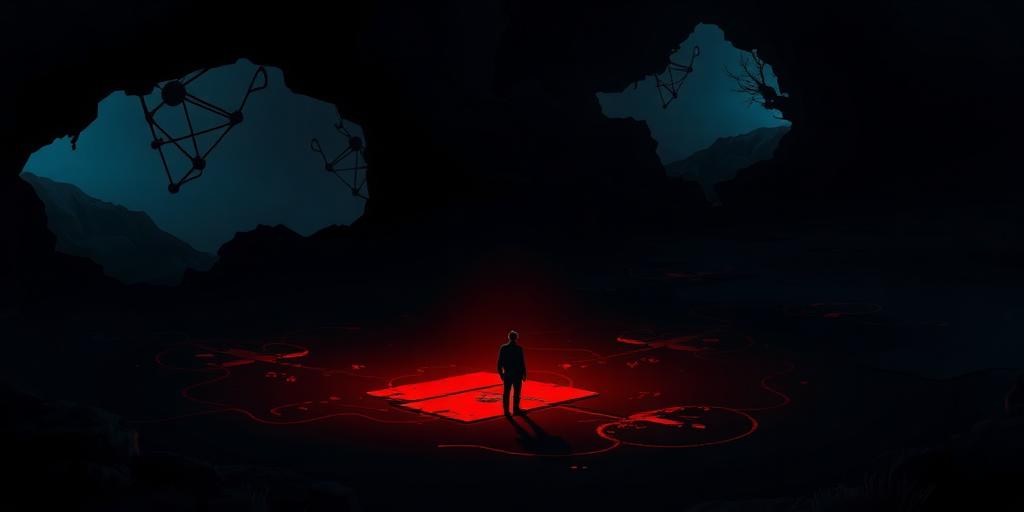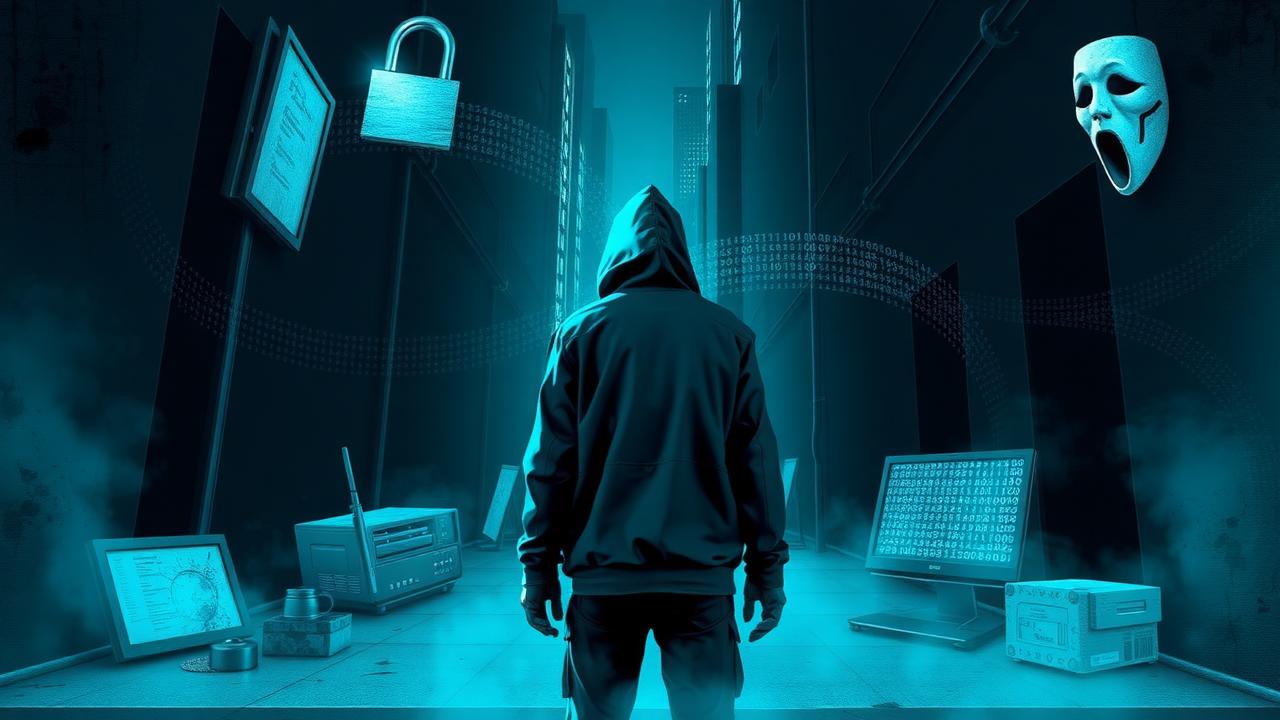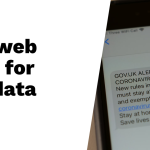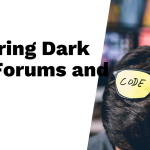The Dark Web is a hidden part of the internet, often dangerous yet not entirely without purpose. While it does harbor illegal activities like identity theft and drug trafficking, some use it for protected communication. The threats emanating from the Dark Web are numerous: cybercrime marketplaces sell stolen data and hacking tools, while malware distribution sites can easily infect devices. Identity theft is rampant, with personal information frequently traded. To stay safe, it’s vital to be informed on risks and implement protective measures like educating employees about cybersecurity, enforcing strong password policies, and regularly monitoring for breaches in your digital assets.
Table of Contents
- Understanding the Dark Web
- Key Security Threats from the Dark Web
- Risks Associated with Dark Web Use
- Protective Measures
- Frequently Asked Questions
Understanding the Dark Web

The Dark Web is a small segment of the internet that remains hidden from standard search engines. Unlike the surface web we navigate daily, the Dark Web requires special software like Tor or I2P for access, ensuring user anonymity. While it is often labeled as a hub for illegal activities, such as drug trafficking and identity theft, it also plays a vital role in providing privacy for individuals like activists and journalists in oppressive regimes. Content on the Dark Web is typically hosted on .onion or .i2p domains, which reflect its secretive nature. Users here prioritize anonymity and often employ additional security measures like VPNs and encryption. Beyond illegal marketplaces, the Dark Web hosts forums for political discussions and free speech, creating a unique environment that, despite its negative reputation, serves legitimate purposes. It’s important to note that the Dark Web is not inherently dangerous; however, the lack of regulation can lead naive users into risky situations. Understanding this hidden part of the internet can help users navigate its complexities and take the necessary precautions.
Key Security Threats from the Dark Web
The Dark Web is a hub for various security threats that can severely impact both individuals and organizations. One of the most alarming aspects is the cybercrime marketplace, where stolen personal data is routinely bought and sold. This data can lead to serious identity theft, leaving victims vulnerable to financial fraud and emotional distress. Cybercriminals also sell hacking tools and malware, making it disturbingly easy for anyone, regardless of skill level, to launch attacks on unsuspecting targets.
Cryptocurrencies play a significant role in these transactions, providing anonymity that makes tracing illegal financial flows nearly impossible. This creates a safe haven for malicious actors, who can purchase phishing kits, ransomware, and other harmful software without revealing their identities.
Additionally, the Dark Web is home to services like DDoS attacks for hire, which can cripple businesses by overwhelming their online services. This not only disrupts operations but can also lead to significant financial losses. Forums dedicated to cybercrime allow criminals to collaborate and share knowledge, continuously evolving their methods and making it harder for law enforcement to keep up.
Stolen credentials are another common issue, sold at a premium on the Dark Web. These credentials can be used for account takeovers or other forms of financial fraud, putting countless individuals at risk. Data breaches, often resulting in sensitive information being leaked, further fuel this market, as hackers look to profit from the personal details of unsuspecting victims. Guides on how to commit various cybercrimes lower the barrier to entry, attracting more individuals into this dangerous space. Furthermore, the anonymity of the Dark Web can embolden individuals to engage in cyberbullying and harassment, with serious implications for mental health.
| Threat | Description | Potential Impact |
|---|---|---|
| Cybercrime Marketplace | Sales of stolen data, hacking tools, and malware with cryptocurrency transactions for anonymity. | Identity theft, financial loss. |
| Malware Distribution | Common sources for malware that infects devices, leading to data theft. | Data breaches, compromised personal information. |
| Identity Theft and Credential Abuse | Stolen information sold leading to fraud and account access. | Financial fraud, unauthorized transactions. |
| Illegal Services | Services such as DDoS attacks and hacking-for-hire. | Service disruption, financial loss. |
| Forums for Cybercriminals | Platforms for knowledge sharing and collaboration among cybercriminals. | Increased sophistication of cyber attacks. |
Risks Associated with Dark Web Use
Engaging with the Dark Web comes with serious risks that can impact users in various ways. First, there are significant legal repercussions for those who participate in illegal activities, which can result in hefty fines or even imprisonment. Many users may not fully understand the laws surrounding online actions, leading them to unknowingly engage in scams. These scams can cause financial losses or identity theft, as malicious actors are always ready to exploit inexperienced users. Additionally, the Dark Web is filled with violent or disturbing content that can lead to psychological distress or trauma after exposure.
Moreover, visiting Dark Web sites can open the door to malware infections that compromise devices and sensitive information. A lack of knowledge about safe navigation can lead users to engage in risky behavior, exposing them to potential danger. The anonymity of the Dark Web can encourage unethical practices, as users may feel emboldened to partake in activities they would otherwise avoid.
Scammers often target individuals who are not familiar with the Dark Web, preying on their inexperience. Being part of a community that normalizes illegal behaviors can also influence users negatively, shifting their moral compass. Lastly, the unpredictable nature of the Dark Web can present threats that users may not be prepared to handle, making it crucial for anyone considering accessing this hidden part of the internet to thoroughly understand the risks involved.
Protective Measures
To safeguard against the threats posed by the Dark Web, implementing effective protective measures is crucial. Start by establishing cybersecurity awareness programs. These programs help users recognize and avoid online threats like phishing and social engineering. Regular training sessions can empower employees to make safer online choices. Additionally, using monitoring tools to keep track of mentions of personal or business information on the Dark Web can alert you to potential breaches before they escalate.
Adopting strong password policies is also essential. Encourage the use of complex and unique passwords for all accounts, and promote two-factor authentication as an extra layer of security. This way, even if a password is compromised, unauthorized access can still be prevented. Furthermore, apply the principle of least privilege by limiting user access to sensitive information based on their job roles. This minimizes the risk of data breaches by ensuring that only those who need access can obtain it.
Regular security assessments are vital to identify vulnerabilities within your systems. Conducting penetration tests and vulnerability scans can help you address weaknesses before they are exploited. Educating users on safe browsing practices is another key aspect of protection. If accessing potentially dangerous areas of the internet, using dedicated systems or virtual machines can prevent malware from affecting corporate networks.
Consider implementing credit monitoring and freezing credit reports to protect against identity theft. This can be particularly useful in today’s landscape where personal information is often bought and sold on the Dark Web. Lastly, remind users to be cautious and skeptical of offers or services that seem too good to be true, as they are often traps designed to harvest personal data.
- Implement cybersecurity awareness programs to help users recognize and avoid threats online.
- Use monitoring tools to keep an eye on the Dark Web for any mention of your personal or business information.
- Adopt strong password policies that require complex and unique passwords for all accounts.
- Encourage the use of two-factor authentication as an extra layer of security against unauthorized access.
- Limit user access to sensitive information based on their job requirements to minimize risks of data breaches.
- Conduct regular security assessments to identify vulnerabilities within your systems and address them promptly.
- Educate users on safe browsing practices, especially when accessing potentially dangerous areas of the internet.
- Consider freezing credit reports to protect against identity theft and unauthorized financial activity.
- Regularly review and update security protocols to adapt to emerging threats from the Dark Web.
- Encourage users to be cautious and skeptical of offers or services that seem too good to be true.
Frequently Asked Questions
1. What is the dark web and how is it different from the regular internet?
The dark web is a part of the internet that isn’t indexed by search engines, meaning most people can’t find it using standard browsers. It’s often associated with illegal activities, while the regular internet is what we typically use daily.
2. What are some common security threats on the dark web?
Common security threats include hacking services, stolen personal information, malware, and illegal marketplaces. These can put your privacy and security at risk.
3. How can I protect myself from dark web threats?
To protect yourself, use strong passwords, enable two-factor authentication, stay updated on security software, and avoid sharing personal information online.
4. What signs might indicate that my information is on the dark web?
Signs include receiving strange emails, unauthorized account access, or alerts from security services. If you suspect your information might be there, it’s wise to take action.
5. Can I access the dark web safely?
You can access it safely by using special browsers like Tor and taking precautions, but remember, even then, there are risks involved.
TL;DR The Dark Web is an unindexed part of the internet that poses various security threats, including cybercrime marketplaces, malware distribution, and identity theft. Users face risks such as legal issues, scams, and psychological impacts. To mitigate these threats, individuals and organizations should implement cybersecurity training, use monitoring tools, enforce strong password policies, and practice secure browsing. Staying informed and proactive is crucial to protecting sensitive information in the face of evolving Dark Web threats.





